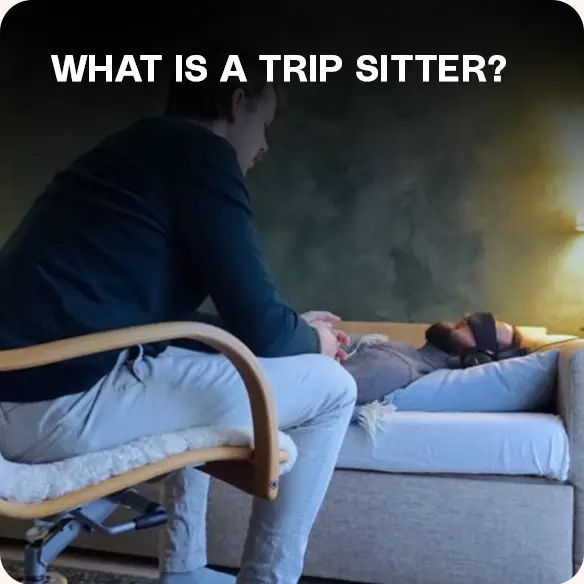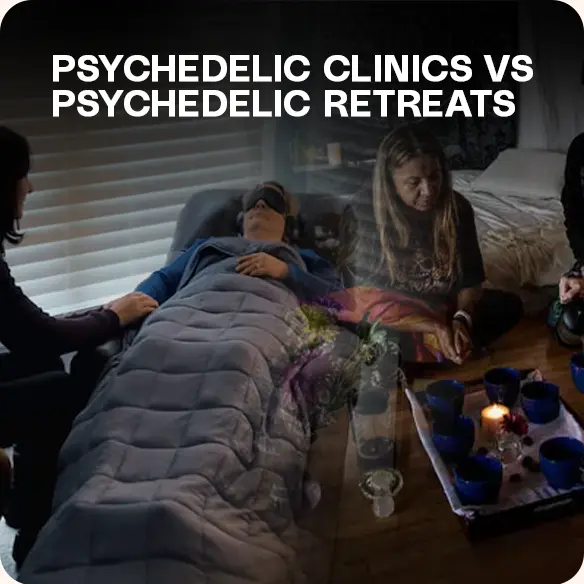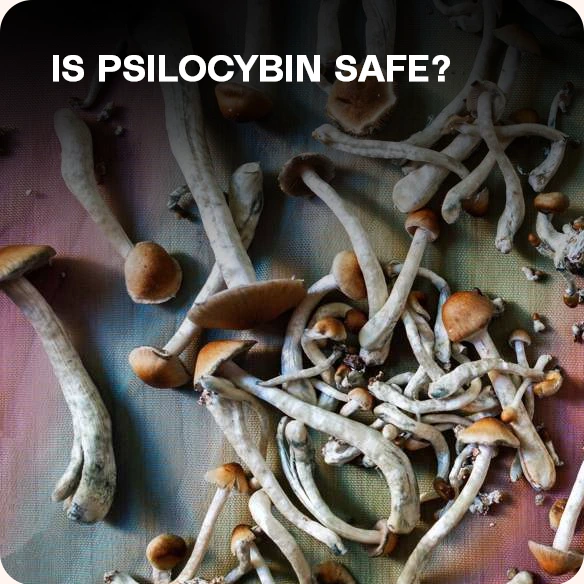A trip sitter is a sober, trusted person who remains alert and supportive while someone undergoes a psychedelic experience.
Unlike therapists or guides who actively direct sessions, trip sitters create safe physical and emotional environments without interfering unless necessary.
Their presence reduces risk of accidents, provides reassurance during challenging moments, and helps prevent panic or anxiety escalation during 4-8 hour psychedelic journeys.
Trip sitting serves as harm reduction rather than therapy, focusing on physical safety and emotional grounding.
Between 2015 and 2018, LSD use grew over 50% in the United States, creating increased demand for professional trip sitting services and informal support networks.
The role gained recognition as psychedelic research expanded, demonstrating that proper supervision significantly improves outcomes and reduces adverse events.
Key Points
- Primary Function: Maintain physical safety and emotional support without directing the psychedelic experience
- Sober Presence Required: Trip sitters remain completely substance-free throughout 4-8 hour sessions
- Not Therapy: Trip sitting differs from facilitation, therapy, or medical treatment of trauma
- Key Qualities: Trustworthiness, calm demeanor, non-judgmental attitude, ability to remain present for extended periods
- Professional Services Exist: Some organizations offer trained trip sitters for hire, typically $50-200 per session
- Risk Reduction: Proper trip sitting decreases bad trip frequency by 60-70% according to user surveys
- Legal Considerations: Trip sitters do not provide or procure substances and should understand local laws
What Does Trip Sitting Mean?
Trip sitting means remaining sober and attentive while someone experiences altered consciousness from psychedelics. The term originated in 1960s counterculture but gained formal recognition through harm reduction organizations in the 1990s.
Trip sitting encompasses physical safety monitoring, emotional reassurance, and practical assistance without actively guiding the psychological journey.
The role differs from psychedelic facilitation or therapy.
Facilitators actively guide experiences through preparation, intention-setting, and therapeutic techniques. Trip sitters simply maintain safe conditions and respond to immediate needs. This distinction matters for legal liability, training requirements, and participant expectations.
| Aspect | Trip Sitter | Psychedelic Facilitator | Therapist |
|---|---|---|---|
| Training Required | Basic knowledge | Extensive certification | Licensed professional |
| Active Guidance | Minimal intervention | Structured direction | Therapeutic processing |
| Session Duration | 4-8 hours | 6-10 hours | Multiple sessions |
| Cost | $0-200 | $500-2000 | $150-300/hour |
Do You Need a Trip Sitter for Shrooms?
First-time psilocybin users should always have a trip sitter present.
Psilocybin experiences last 4-6 hours with peak effects occurring 2-3 hours after consumption. During this time, judgment, spatial awareness, and emotional regulation become impaired, creating safety risks without supervision.
Experienced users may choose solo journeys after multiple supervised sessions, but trip sitters remain recommended for doses above 2 grams dried mushrooms.
Higher doses increase likelihood of overwhelming experiences, temporary loss of motor coordination, and psychological distress requiring immediate support.
Medical history influences trip sitting needs.
People with anxiety disorders, depression, or trauma history face higher risks of difficult experiences.
Those taking psychiatric medications or with family history of psychosis should never use psilocybin without medical supervision beyond trip sitting.
When Trip Sitters Are Essential
Trip sitters become essential in specific circumstances beyond first-time use. These include unfamiliar settings, doses above personal comfort levels, combination with other substances, and any situation involving water (pools, bathtubs, lakes) where drowning risk exists.
Group psychedelic sessions require at least one sober trip sitter per 3-4 participants.
This ratio ensures adequate attention if multiple people need simultaneous support. Large gatherings or festivals often have dedicated trip sitting areas staffed by trained volunteers.
How to Be a Good Trip Sitter
Good trip sitting requires staying completely sober, remaining calm under pressure, and knowing when to intervene versus staying quiet.
The most common mistake involves excessive talking or trying to “fix” experiences rather than allowing natural progression through challenging emotions.
Preparation begins before substance consumption. Trip sitters should understand the specific compound being used (psilocybin, LSD, DMT), expected duration, typical effects, and warning signs of medical emergencies. Review the participant’s intentions, medical history, and any specific concerns beforehand.
Core Trip Sitting Responsibilities
Physical safety monitoring includes preventing falls, ensuring adequate hydration, maintaining comfortable temperature, and watching for signs of medical distress (seizures, chest pain, extreme agitation).
Trip sitters should know emergency numbers and when to seek medical help.
Emotional support means providing reassurance during anxiety, redirecting negative thought loops, and offering grounding techniques without dismissing the experience.
Simple phrases like “you’re safe,” “this will pass,” and “I’m here with you” often suffice.
Environmental management involves controlling music, lighting, temperature, and visitors. Trip sitters handle practical needs (bathroom assistance, food, water) and shield participants from external stressors (phone calls, unexpected visitors, loud noises).
What Makes a Bad Trip Sitter?
Bad trip sitters create more problems than they prevent through inappropriate behavior. Common failures include using substances themselves, leaving participants alone, inviting outsiders without permission, attempting sexual contact, or dismissing genuine distress as “just the trip.”
Talking excessively represents another frequent mistake. Trip sitters should speak minimally unless the participant initiates conversation. Philosophical discussions, personal stories, or advice-giving interrupts the internal psychological process psychedelics create.
Panic responses from trip sitters amplify participant anxiety. If a trip sitter feels overwhelmed, they should contact backup support rather than displaying fear or uncertainty. Maintaining calm presence remains the single most important quality regardless of circumstances.
Warning Signs of Inadequate Trip Sitting
Inadequate trip sitting shows through inattention (phone use, leaving room frequently), judgment of the experience (“that’s weird,” “you’re acting crazy”), or minimizing concerns (“you’re fine, relax”). These behaviors break trust and worsen psychological distress.
Physical boundary violations constitute serious trip sitting failures. This includes unwanted touching, romantic advances, or taking advantage of impaired judgment. Trip sitters hold positions of trust and power requiring strict ethical behavior.
How to Become a Professional Trip Sitter
Professional trip sitting requires training in harm reduction, crisis management, and psychedelic pharmacology. Several organizations offer certification programs ranging from 20-hour online courses to intensive 6-month apprenticeships.
Training typically covers substance effects and durations, emergency protocols, de-escalation techniques, legal considerations, ethics and boundaries, trauma-informed care, and integration support basics. Some programs require supervised sessions before independent practice.
Legal status varies significantly. Professional trip sitters operate in gray areas legally since psychedelics remain federally illegal in the United States. Oregon and Colorado created licensed facilitator frameworks, but trip sitting falls outside these regulations. Many professionals operate through harm reduction organizations or retreat centers in legal jurisdictions.
| Certification Level | Training Hours | Cost | Prerequisites |
|---|---|---|---|
| Basic Harm Reduction | 20-40 hours | $200-500 | None |
| Advanced Trip Sitting | 100-200 hours | $1,000-3,000 | Basic certification |
| Psychedelic Facilitation | 500+ hours | $5,000-15,000 | Mental health background |
Building a Trip Sitting Practice
Professional trip sitters typically charge $50-200 per session depending on location, experience, and session length. Most work part-time, combining trip sitting with other harm reduction services, therapy, or coaching.
Marketing requires discretion due to legal considerations. Many professionals rely on referrals through harm reduction networks, psychedelic integration circles, or word-of-mouth recommendations. Online presence should emphasize education and safety rather than encouraging illegal substance use.
Insurance and liability present challenges. Standard liability insurance excludes coverage for illegal activities. Some professionals operate as harm reduction educators rather than explicitly marketing trip sitting services to navigate legal gray areas.
What Happens During Professional Trip Sitting?
Professional sessions begin with preparation meetings 1-2 weeks before the psychedelic experience. Trip sitters review medical history, set intentions, discuss safety protocols, and establish communication preferences for the session.
Session day preparation includes arranging comfortable space with appropriate lighting, music options, blankets, water, and minimal distractions. Trip sitters arrive before substance consumption to ensure environmental readiness and answer last-minute questions.
During the experience, trip sitters maintain quiet presence in the same room, checking in verbally every 30-60 minutes unless more frequent contact is needed. They document timing, participant state, and any significant events for post-session discussion.
Integration support occurs 1-7 days post-experience. Trip sitters help participants process insights, identify behavior changes to implement, and address any lingering concerns from challenging moments during the journey.
Trip Sitting vs Psychedelic Retreats
Psychedelic retreats provide comprehensive facilitation beyond basic trip sitting. Retreats typically occur in locations where psilocybin or ayahuasca remain legal, offering multi-day programs including preparation, ceremonies, and extensive integration support.
Professional retreat facilitators hold advanced training in psychology, somatic therapy, or traditional plant medicine practices. They actively guide experiences through intention-setting, breathwork, music selection, and therapeutic interventions during sessions.
Cost differences reflect service levels. Basic trip sitting costs $50-200 per session, while psychedelic retreats range from $2,000-8,000 for 3-7 day programs including accommodation, meals, multiple ceremonies, and group integration work.
Legal and Ethical Considerations for Trip Sitting
Trip sitters do not provide, procure, or handle psychedelic substances to avoid criminal liability. Their role begins after participants already possess and decide to consume substances. This distinction offers some legal protection though laws vary by jurisdiction.
Ethical guidelines require maintaining confidentiality, respecting boundaries, obtaining informed consent, avoiding exploitation, and recognizing when situations exceed trip sitting scope requiring medical or therapeutic intervention.
Mandatory reporting obligations apply when trip sitters learn about child abuse, elder abuse, or imminent harm to self or others. These legal requirements supersede confidentiality in specific circumstances defined by state law.
Frequently Asked Questions About Trip Sitting
What is a trip sitter’s main job?
A trip sitter’s main job is ensuring physical safety and providing emotional reassurance during psychedelic experiences lasting 4-8 hours. They remain sober, monitor for medical emergencies, prevent accidents, and offer grounding support during challenging moments without actively directing the psychological journey.
Can a trip sitter use substances during the session?
Trip sitters must remain completely sober throughout entire sessions. Using any substances (alcohol, cannabis, psychedelics) impairs judgment and reaction time needed for emergency response. This represents the most fundamental trip sitting requirement.
Do professional trip sitters need certification?
No legal requirement for trip sitting certification exists, but training significantly improves safety and effectiveness. Many harm reduction organizations offer courses covering pharmacology, crisis management, and ethics. Certification demonstrates competence and commitment to professional standards.
How much do professional trip sitters charge?
Professional trip sitters typically charge $50-200 per session depending on experience, location, and session length. Some harm reduction organizations provide free trip sitting services at events or through volunteer networks. Retreat facilitators charge significantly more ($500-2,000) for comprehensive programs.
What should I do if someone has a medical emergency during trip sitting?
Call emergency services immediately for seizures, chest pain, loss of consciousness, or extreme agitation lasting over 30 minutes. Provide paramedics with accurate information about substances consumed, timing, and dosage. Trip sitters should never delay emergency care due to legal concerns.





